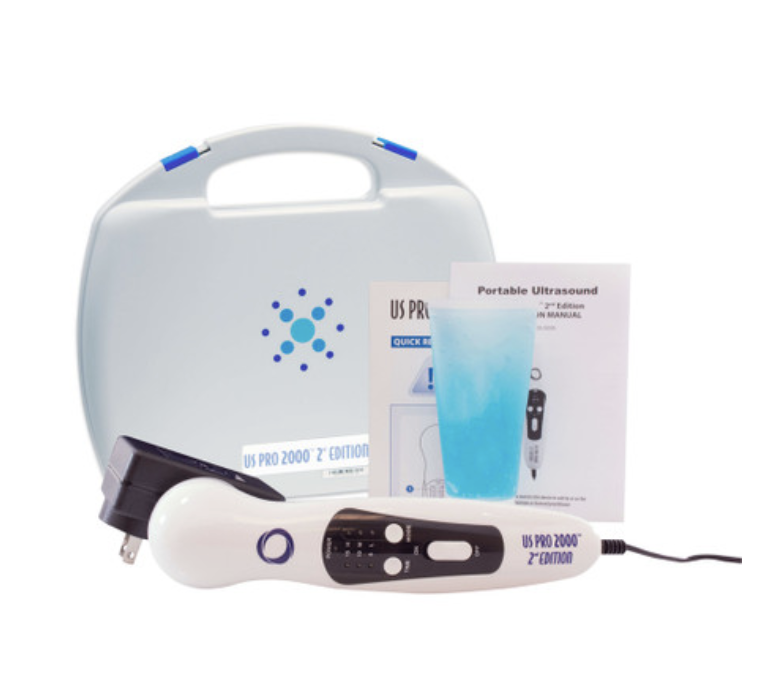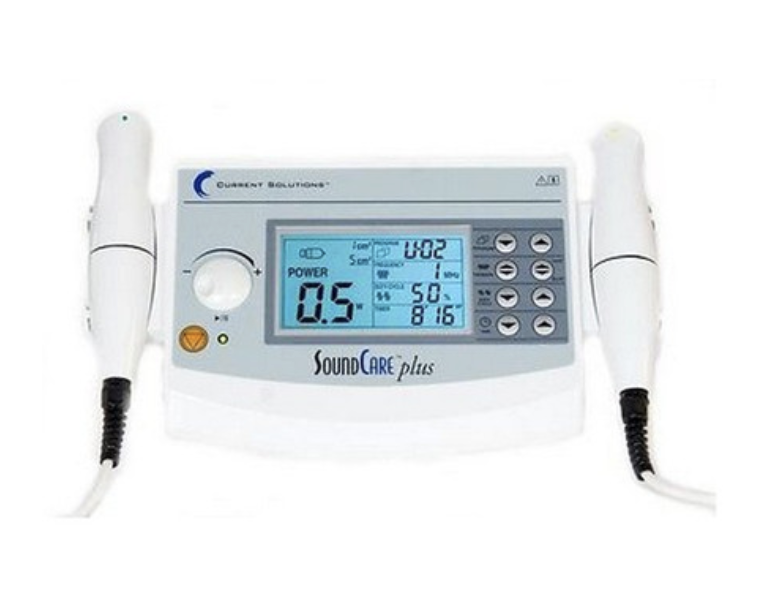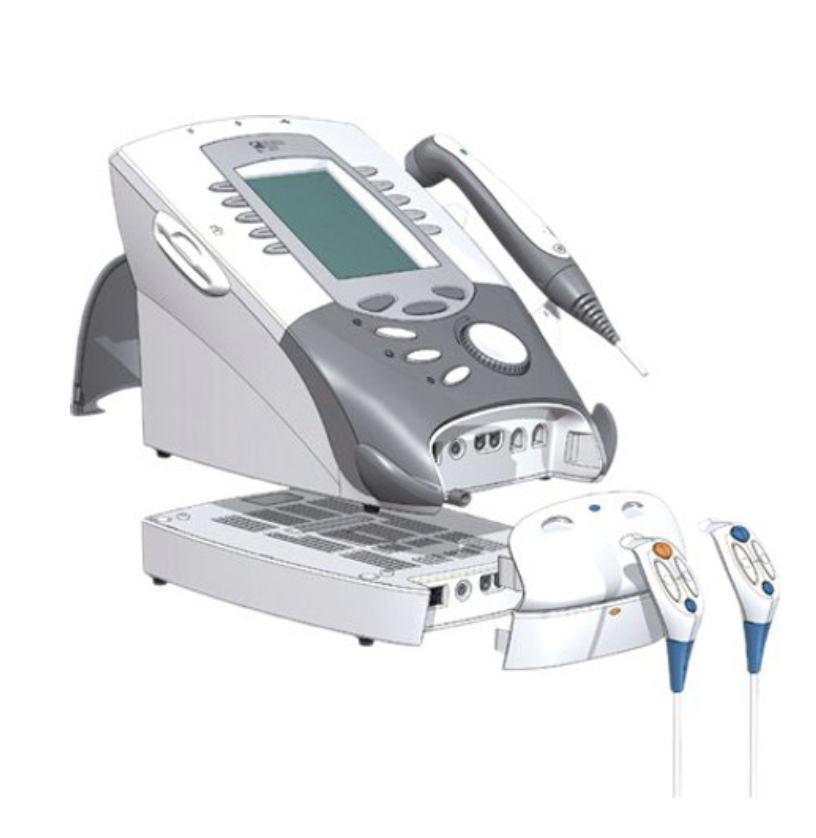 23rd Sep 2024
23rd Sep 2024
How Expensive is a Therapeutic Ultrasound Machine?
One of the more common questions we get here at Prohealthcareproducts.com is why are there so many different prices for ultrasound machines? Many of these questions come from individuals looking to continue their ultrasound treatment after completion of their physical therapy sessions. The out-of-the-chute answer is because there are so many different variations and capabilities of machines. As such, the hardware and software that power the different ultrasound units can be very different. Further, one machine may have limited features and treatment options and another come with all the bells and whistles, and the kitchen sink.
|
Note: It should be noted that sometimes people confuse a therapeutic ultrasound machine, with a diagnostic ultrasound machine.
|
A Wide Range of Ultrasound Machine Features to Consider – Each with Additional Costs
Ultrasound machines may come with only very basic features, or a wide variety of features. These features can be very different among ultrasound machines and can affect the quality, functionality, capabilities, treatment options, and consequently, the price of the unit.
Output power and Effective Intensity. This is the rate at which energy is being delivered per unit area and is a function of both pulse width and pulse frequency, measured in watts. Also referred to as the spatial average intensity (SAI) which is the intensity of the ultrasound beam averaged over the area of the soundhead. There are no definitive guidelines for ultrasound intensity during treatment, but a range of intensity for a moving soundhead of 0.5 to 3 W/cm2 is considered safe.
The intensity a machine delivers can affect the treatment time – the lower the intensity the longer the treatment time. Because the best use of time is an important factor in successfully running a clinic or specific to personal time restraints, having a good level of intensity not only affects the cost of an ultrasound unit, but may also impact productivity.
Therapeutic Ultrasound Frequency. Frequency is the number of vibration cycles that occurs per second. Typically, ultrasound machines have 1 MHz, 2 MHz, and 3 MHz, frequencies, or just the extremes of 1 MHz and 3MHz frequencies.
Ultrasound frequency determines the depth of tissue penetration and therefore what conditions or injuries would be treated with the different frequencies.
3 MHz frequency soundwaves are absorbed more superficially (1 cm to 2 or 3 cm depth) and are therefore used to treat conditions that are more superficial, whereas 1 MHz frequency soundwaves are transmitted through the more superficial tissues and absorbed primarily in deeper tissues (3 cm to 6 cm depth).
At 3 MHz frequency the rate of soundwave absorption is 3 times faster than at 1 MHz and therefore heats the tissue 3 times faster. This too can affect time of treatment. However, because the tissues are heated more rapidly at 3 MHz producing a greater risk for skin burns, compared to 1 MHz, some portable home based ultrasound units only have 1 MHz frequency. This obviously would reduce the cost of an ultrasound unit.
Number of Ultrasound heads included. Most ultrasound machines come standard with a 5 cm2 applicator head. However, some also include a 1 cm2 and maybe even a 10 cm2 applicator head. The greater the number of applicator heads included with the ultrasound machine, the greater the cost will be.
Quality of the Ultrasound Head. Located in the ultrasound head is a crystal. When an electrical current is applied to the crystal it vibrates and produces sound waves. The quality of the crystal can affect how well the ultrasound waves penetrates the tissues. Crystal quality is partly determined by its:
- Effective Radiating Area (ERA). The surface area of the ultrasound head that effectively transmits a sound wave from the crystal to the tissues. While the ERA is always smaller than the surface size of the ultrasound head, the closer the size of the crystal is to the size of the ultrasound head surface the better for more ease in application in maintaining effective contact with the targeted tissue area.
- Beam Nonuniformity Ratio (BNR). The BNR is a measure of the uniformity of the ultrasound beam emitted from the ultrasound head. The BNR is the ratio of the spatial peak intensity to the spatial average intensity. A good BNR is between 2 to 5. The lower the BNR, the more uniform the ultrasound output will be and the less likelihood of developing a hot spot or an area of concentrated energy and resulting discomfort.
A high quality crystal will cost more than a lesser quality crystal.
Another feature that may or may not be included with an ultrasound head is whether or not it is designed to be able to deliver the ultrasound therapy under water because of a design that includes a watertight applicator head feature. This feature allows the use of water, as compared to the ultrasound gel, to be used as the medium to transmit the soundwaves from the ultrasound head into the body tissues. This can make treating bony areas where it would be hard to maintain the important surface-to-surface contact of the applicator head to the body surface, more effective. This is because if surface-to-surface contact is reduced (such as tilting the head or the treatment area being such that maintaining flush contact is impossible) the transmission of soundwaves is reduced, and therefore effectiveness, is compromised.
Preset programs and treatment times. Depending on the individual ultrasound machine, it may come with preset programs (a few or many) that can be easily selected with the push of a button or turn of a dial. These may be designed/programmed based on research data for treatment of a specific musculoskeletal condition. The greater the options, the potential for the cost to increase.
Duty Cycle and Mode (wave form). Duty cycle is the percentage of time that the ultrasound is generated over one pulse period. An ultrasound may operate in “pulsed” mode (where the ultrasound energy is periodically interrupted so no energy is being produced) and/or “continuous” mode (where the ultrasound energy remains constant – 100% throughout the treatment).
- Pulsed mode produces non-thermal effects to increase tissue healing and decrease inflammation and associated pain
- Continuous mode produces thermal effects to enhance tissue regeneration and pain reduction
Some portable home use ultrasound units only offer “pulsed” mode.
Durability (and associated warranty). Clinical grade ultrasound units are built durable to be able to deliver multiple ultrasound therapy treatments each day, whereas home based ultrasound units are designed for individual use where ultrasound therapy may only be delivered once a day, every other day. This difference certainly affects the cost of an ultrasound unit.
Inclusion of electrical stimulation: While there are units that only offer ultrasound technology, an increasing number of modalities combine both ultrasound and electrical stimulation in one machine. This addition to ultrasound, along with the wide variety of electrical stimulation features, will have a dramatic impact on the cost of a unit.
Other Design and Manufacturing Differences. It should be noted that each company will have unique design and manufacturing differences that can and do affect the bottom line cost of their products and may or may not impact the product’s efficacy.
As previously
stated, the aforementioned varying features of ultrasound therapy machines can
affect the quality, functionality, capabilities, treatment options, and
consequently, the price of the ultrasound unit.
Prohealthcareproducts.com offers a wide variety of therapeutic ultrasound machines for your consideration. You can check them out by accessing the URL link below.
https://www.prohealthcareproducts.com/ultrasound-therapy-machines/
Also check out our combination ultrasound and electrical stimulation machines by accessing the URL link below.
https://www.prohealthcareproducts.com/combo-ultrasound-and-e-stim-therapy/








